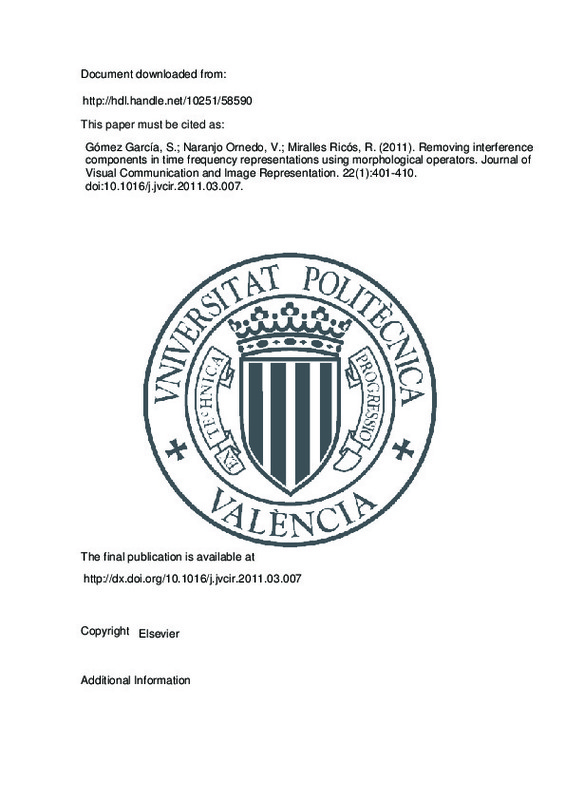JavaScript is disabled for your browser. Some features of this site may not work without it.
Buscar en RiuNet
Listar
Mi cuenta
Estadísticas
Ayuda RiuNet
Admin. UPV
Removing interference components in time frequency representations using morphological operators
Mostrar el registro completo del ítem
Gómez García, S.; Naranjo Ornedo, V.; Miralles Ricós, R. (2011). Removing interference components in time frequency representations using morphological operators. Journal of Visual Communication and Image Representation. 22(1):401-410. doi:10.1016/j.jvcir.2011.03.007
Por favor, use este identificador para citar o enlazar este ítem: http://hdl.handle.net/10251/58590
Ficheros en el ítem
Metadatos del ítem
| Título: | Removing interference components in time frequency representations using morphological operators | |
| Autor: | Gómez García, Soledad | |
| Entidad UPV: |
|
|
| Fecha difusión: |
|
|
| Resumen: |
Time-frequency representations have been of great interest in the analysis and classification of non-stationary signals. The use of highly selective transformation techniques is a valuable tool for obtaining accurate ...[+]
|
|
| Palabras clave: |
|
|
| Derechos de uso: | Reserva de todos los derechos | |
| Fuente: |
|
|
| DOI: |
|
|
| Editorial: |
|
|
| Versión del editor: | http://dx.doi.org/10.1016/j.jvcir.2011.03.007 | |
| Código del Proyecto: |
|
|
| Agradecimientos: |
|
|
| Tipo: |
|







![[Cerrado]](/themes/UPV/images/candado.png)


